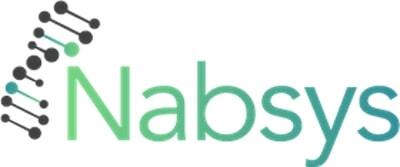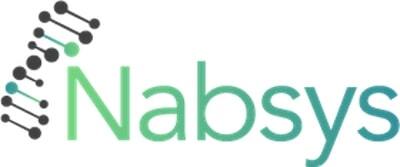
Multi-omics study utilizing electronic genome mapping (EGM) reveals 70% of patients with interstitial cystitis/bladder pain syndrome (IC/BPS) have psychiatric comorbidities and uncovers novel proteomic and genetic insights int
o IC/BPS
EGM offers streamlined analysis and scalable, cost-effective structural variant (SV) identification in hematological malignancies
EGM enables efficient and scalable detection of repeat expansions, including Fragile X syndrome
Application of CRISPR/Cas9 technology to repair double-strand breaks caused by sample preparation in EGM improves accuracy and scope of Ohm
X™ Platform
PROVIDENCE, R.I., Oct. 16, 2025 /PRNewswire/ — Nabsys 2.0, LLC (Nabsys), a pioneer in electronic genome mapping technology, today announced the presentation of data highlighting novel disease insights and applications of the OhmX™ Platform in multiple disease states at the American Society of Human Genetics (ASHG) Annual Meeting taking place on October 14-18, 2025, in Boston, MA.
A multi-disciplinary team of leading researchers at Boston Children’s Hospital presented a poster titled, “Comprehensive Multi-Omics Study of Interstitial Cystitis/Bladder Pain Syndrome” (Poster # 4101T), which revealed the high prevalence of psychiatric comorbidities in interstitial cystitis/bladder pain syndrome (IC/BPS) and identified several differentially expressed proteins involved in key disease-signaling pathways. High-level findings from the study include:
- Researchers from Boston Children’s Hospital combined exome sequencing and the Nabsys OhmX Platform analysis of the BCH IC/BPS cohort (N=248) and compared against 100 individuals from the Maryland Genetics of Interstitial Cystitis Study (MaGIC) Cohort (N=348 total). Data was further analyzed using gene-based collapsing, gene set, exome-wide association study (ExWAS), trio and diagnostic approaches and compared to 11,981 controls.
- 70% of individuals with IC/BPS had a psychiatric diagnosis, with the majority being depressive and anxiety disorders (55%).
- Proteomics data showed 13 differentially expressed proteins and enrichment of several pathways.
- No single gene was associated with risk for IC/BPS, though collapsing analyses produced new candidates (e.g., DYX1C1 and HTR7) alongside a novel and significant association with the “small molecule transport” gene pathway.
- The association of IC/BPS with previously identified Mendelian disease genes (ATP2C1, DCAF8, SIX5, ENAM, and ATP2A2) was strengthened (odds ratio (OR)=7.4, confidence interval (CI)=1.6-26.4, p-value (p)=0.005). The presence of anxiety as a comorbid condition increased the OR of having a variant in the Mendelian gene list (OR=29.2, CI=3.0-146.6, p=0.003).
- Importantly, the researchers at Boston Children’s Hospital utilized the Nabsys OhmX Platform to identify a previously undetected translocation (t3;9) involving NOTCH1 in one individual. Interestingly, loss of ATP2C1 leads to impaired NOTCH1 signaling.
“Interstitial cystitis and bladder pain syndrome are characterized by persistent and distressing symptoms that frequently lead to poor quality of life and high levels of mental stress, but there is no known cause or available treatment option for this condition, which affects millions of people in the U.S. alone,” said Elicia A. Estrella, M.S., LCGC, Boston Children’s Hospital. “In this multi-omics study, we gained a greater understanding of IC/BPS’s detrimental effect on a patient’s mental health, and we utilized Nabsys’s advanced EGM technology to uncover new findings on how this condition and its comorbidities are linked to the human genome. By providing clinicians, patients, and caregivers these novel insights into IC/BPS, we take an important step forward as we work to improve holistic patient outcomes.”
Nabsys also authored three posters highlighting additional capabilities of the OhmX Platform that extend the capabilities of EGM data:
-
Electronic Genome Mapping as a Tool for Detection of TP53 Deletions in Genomic Analysis
(Poster # 8028T): The OhmX Platform, leveraging electronic EGM and solid-state, nanochannel detection, was used to map a reciprocal PML::RARA gene fusion event, a BCR::ABL1 translocation, and several TP53 deletions. using a dense, sequence-specific tagging strategy and an electronic detection system with approximately 300 bp resolution. EGM enabled high-confidence mapping and simple detection of these SVs that are clinically significant in hematologic malignancies. -
Electronic Genome Mapping for High-Throughput Analysis of Repeat Expansion Disorders
(Poster # 4065T): Nabsys utilized EGM for repeat expansion detection including a new pipeline specifically for analyzing repeat expansions called RepX Analysis for Repeat Disorders. Researchers found that EGM represents a significant improvement over existing repeat expansion analysis tools, providing a scalable and precise solution for comprehensive repeat expansion testing in Fragile X syndrome. -
Improving Electronic Genome Mapping Coverage With CRISPR/Cas9
(Poster # 4068T): Introducing CRISPR/Cas9 technologies to the EGM workflow can provide significant benefits to structural variant analysis. Researchers demonstrated the use of CRISPR/Cas9 to alleviate unwanted double-stranded proximity breaks caused by EGM sample preparation. Additionally, CRISPR/Cas9 was used to increase specific tagging density to enhance genome mapping resolution.
“Looking specifically at Nabsys’s work detecting translocations and TP53 deletions, we found that our proprietary EGM methodology identified these markers of hematologic cancers with incredible accuracy, demonstrating the value of this platform as a scalable and cost-effective solution in translational cancer research,” said Barrett Bready, M.D., founder and CEO of Nabsys. “In addition, we presented a poster demonstrating how Nabsys’s applied EGM technology improves upon traditional and next-generation sequencing approaches by revealing repeat expansion disorders such as Fragile X syndrome, the most common inherited form of intellectual disability. We believe these results, combined with our findings that show CRISPR/Cas9 as a viable repair method for double-strand breaks in sample preparation, demonstrate how our product will continue to enable breakthroughs in scientific research by elucidating genetic mediators of disease that were previously believed to be resource-intensive, or even untraceable.”
Today’s presentations are available on the “Resources” section of the Company’s website at www.nabsys.com/resources?category=Posters.
Nabsys has announced a total of eight EGM presentations at the ASHG Meeting. The full list of presentations is available here.
About Nabsys 2.0, LLC
The Nabsys 2.0, LLC (“Nabsys”) mission is to advance the understanding of disease, increase diagnostic yield, and improve patient outcomes by enabling routine, accurate, cost-effective analysis of genomic structural variation. Located in Providence, RI, Nabsys employs a growing interdisciplinary group of dedicated scientists, engineers, and other professionals committed to the advancement of genomic analysis.
For more information, visit https://www.nabsys.com.
Media Contact
David Rosen
Argot Partners
[email protected]
646-461-6387
View original content to download multimedia:https://www.prnewswire.com/news-releases/nabsys-presents-novel-disease-insights-and-advantages-in-structural-variant-detection-using-ohmx-platform-at-american-society-of-human-genetics-ashg-2025-annual-meeting-302586373.html
SOURCE Nabsys





